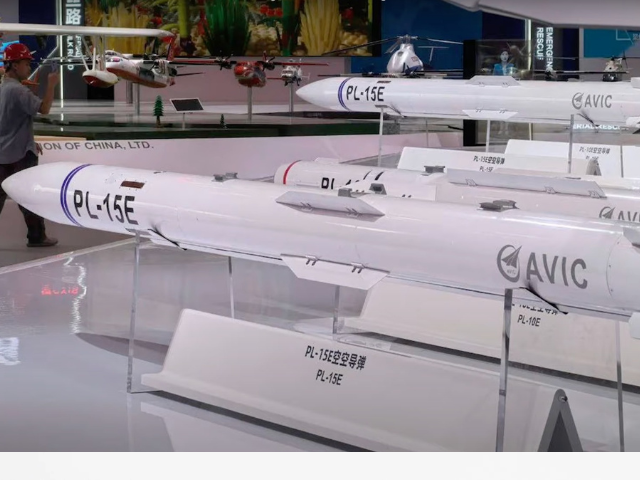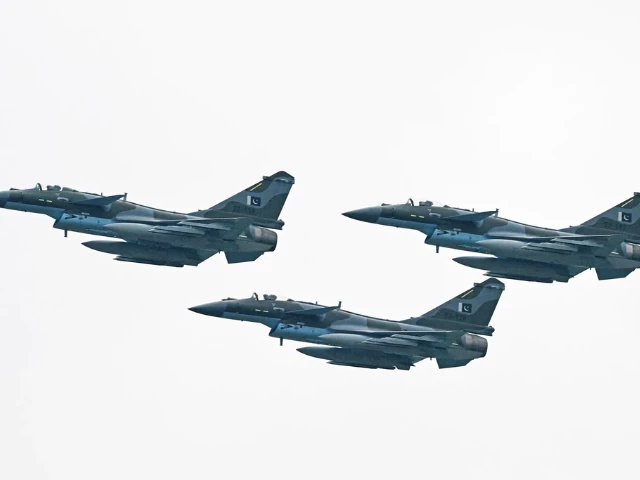The recent escalation between Pakistan and India, which brought both nuclear-armed neighbours to the brink of full-scale war, marked a significant shift in the nature of warfare between the two countries.
For the first time, French-made 4.5 gen Rafale fighter jets operated by India were downed in combat.
Unlike previous conflicts, Pakistan did not rely on US-supplied weaponry, while India has increasingly shifted from Russian arms to equipment sourced from Western countries.
The development is viewed not just as a Pakistan-India engagement, but as a real-world proxy test of Chinese versus Western military technology—potentially fuelling new competition in the global arms market and drawing diplomatic attention from Paris, Washington, and NATO-aligned states.
Several analysts have highlighted the air force engagements, with some pointing to the possible role of Chinese-supplied PL-15 air-to-air missiles perhaps being the difference-maker.
Images shared on social media show a section of the missile’s fuselage with visible serial markings and a seeker test port. Another image appears to show the missile’s seeker head, equipped with an active electronically scanned array (AESA) radar, known for improved tracking and resistance to jamming.
Air-to-air PL-15 missile
The PL-15, developed by China’s Aviation Industry Corporation (AVIC), is a long-range, radar-guided missile designed to engage high-value airborne targets at ranges exceeding 200 kilometres.
PL-15 is China’s standard active-radar-guided AAM, and it was intended to at least match the performance of the US-made AIM-120D Advanced Medium-Range Air-to-Air Missile (AMRAAM).

Its export version, the PL-15E, is reported to have a maximum range of 145 kilometres and is integrated with Pakistan’s JF-17 Block III and J-10CE fighters.
The domestic version in use of the Chinese military has a reported range of between 300-500 kilometers.
South Asian combat theatre
The Pakistan Air Force (PAF) released visuals on April 26 showing JF-17s armed with PL-15E and PL-10 missiles. Pakistan’s fleet includes an estimated 45–50 JF-17 Block IIIs and 20 J-10CEs—approximately 70 aircraft capable of deploying the PL-15E.
The missile’s guidance system includes inertial navigation, Beidou satellite updates, a two-way datalink, and AESA radar terminal homing.
It features a dual-pulse solid rocket motor and can reach speeds exceeding Mach 5. The warhead, typically high-explosive fragmentation, weighs between 20 to 25 kilograms.
The weapon may have been sourced directly from China’s People’s Liberation Army Air Force (PLAAF), a claim not independently verified.
India’s air force, meanwhile, relies on Rafales equipped with Meteor missiles, Su-30MKIs with R-77s, and S-400 SAM systems. PL-15’s range may allow Pakistani fighters to launch from beyond India’s engagement envelopes.
While Pakistan officially confirmed the use of Chinese-made J-10C fighter jets from Chengdu in the downing of Indian Rafales, it has not specified the munitions used.
However, fragments of a PL-15 missile were reportedly recovered from a field near Hoshiarpur in India’s Punjab state, potentially marking the first known use of the Chinese missile in active combat.
The development comes after two US officials told Reuters that a Chinese-made Pakistani fighter aircraft was responsible for shooting down at least two Indian military jets, underscoring a major operational milestone for Beijing’s advanced fighter systems.
A senior French intelligence official also confirmed to CNN that at least one IAF Dassault Rafale jet had been downed during the skirmish with the Pakistan Air Force.
The debris discovery adds pressure to regional air defence planning and underscores shifting dynamics in South Asia’s arms landscape. India’s diversified procurement contrasts with Pakistan’s increasingly centralised reliance on Chinese systems.
Chinese state media have highlighted the PL-15E’s export readiness and advanced production lines. The system’s presence in an active conflict may provide China with operational feedback and expand its influence in the global arms market. Neither China nor Pakistan has commented on the missile’s appearance.
The deployment of the Chinese-made PL-15 missile in South Asia presents a direct technological counter to Western systems like the US AIM-120D AMRAAM and France’s Meteor missile.
While the Meteor is widely regarded as superior in terms of no-escape zones and sustained propulsion via ramjet, the PL-15’s longer range and advanced AESA guidance give it a strategic edge in first-launch scenarios—particularly when fired from standoff ranges.







